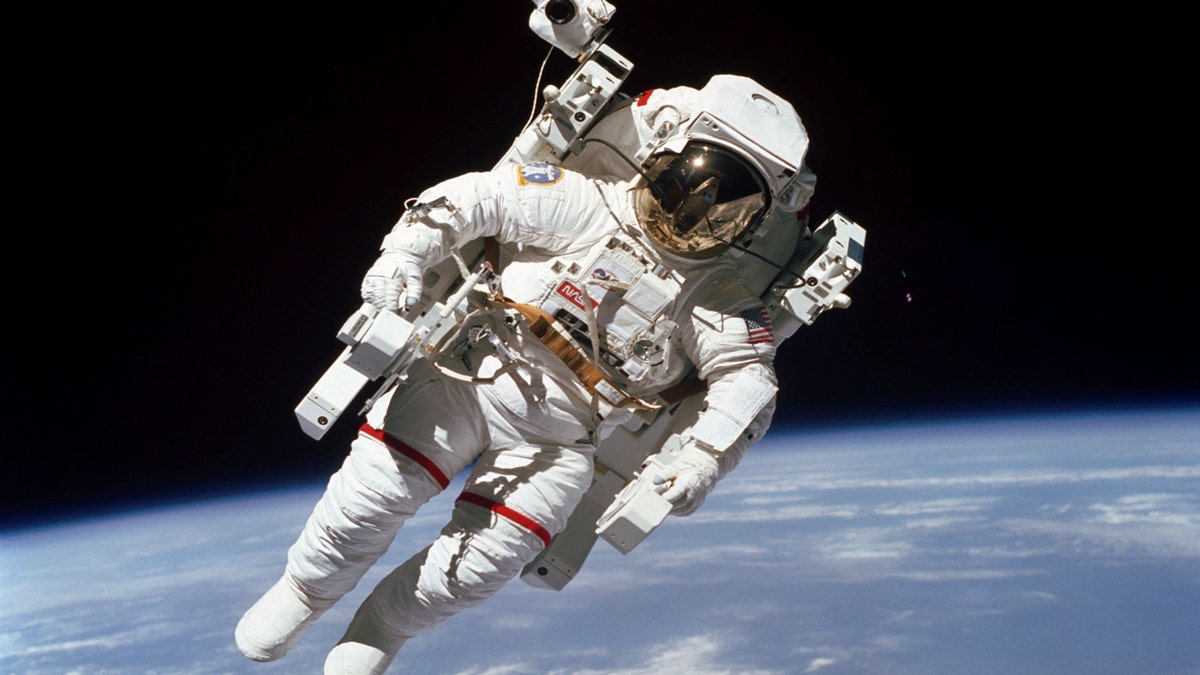
File Feb. 7, 1984: Astronaut Bruce McCandless participates in a spacewalk a few meters away from the cabin of the Earth-orbiting space shuttle Challenger, using a nitrogen-propelled Manned Maneuvering Unit. (NASA via Associated Press)
Astronauts on missions to Mars and beyond could soon survive off a “Vegemite-like” substance made from human waste.
Scientists have just developed the method which uses microbes to break down solid and liquid waste.
What’s left behind is a “microbial goo” that’s high in protein and fat — essential qualities for food sources needed for long space voyages.
According to The Independent, Pennsylvania State University microbe researcher Professor Christopher House said recycling the waste into food would be a serious problem-solver for space expeditions.
Bringing food from earth takes up valuable space and weight, while growing food on board requires a lot of water and energy.
“We envisioned and tested the concept of simultaneously treating astronauts’ waste with microbes while producing a biomass that is edible either directly or indirectly, depending on safety concerns,” he said.
“It’s a little strange, but the concept would be a little bit like Marmite or Vegemite, where you’re eating a smear of ‘microbial goo’.”
The study into the process, which involves “anaerobic digestion” was published in the journal Life Sciences in Space Research.
“Anaerobic digestion is something we use frequently on earth for treating waste,” Professor House said.
“What was novel about our work was taking the nutrients out of that stream and intentionally putting them into a microbial reactor to grow food.”
The method isn’t ready to be rolled out on spacecraft just yet, but could be the future of space food.
“Imagine if someone were to finetune our system so that you could get 85 per cent of the carbon and nitrogen back from waste into protein without having to use hydroponics or artificial light,” Professor House said.
“That would be a fantastic development for deep-space travel. It’s faster than growing tomatoes or potatoes.”
Water is already extracted from astronaut’s urine at the International Space Station, while solid waste is ejected into space.
This story originally appeared in news.com.au.
